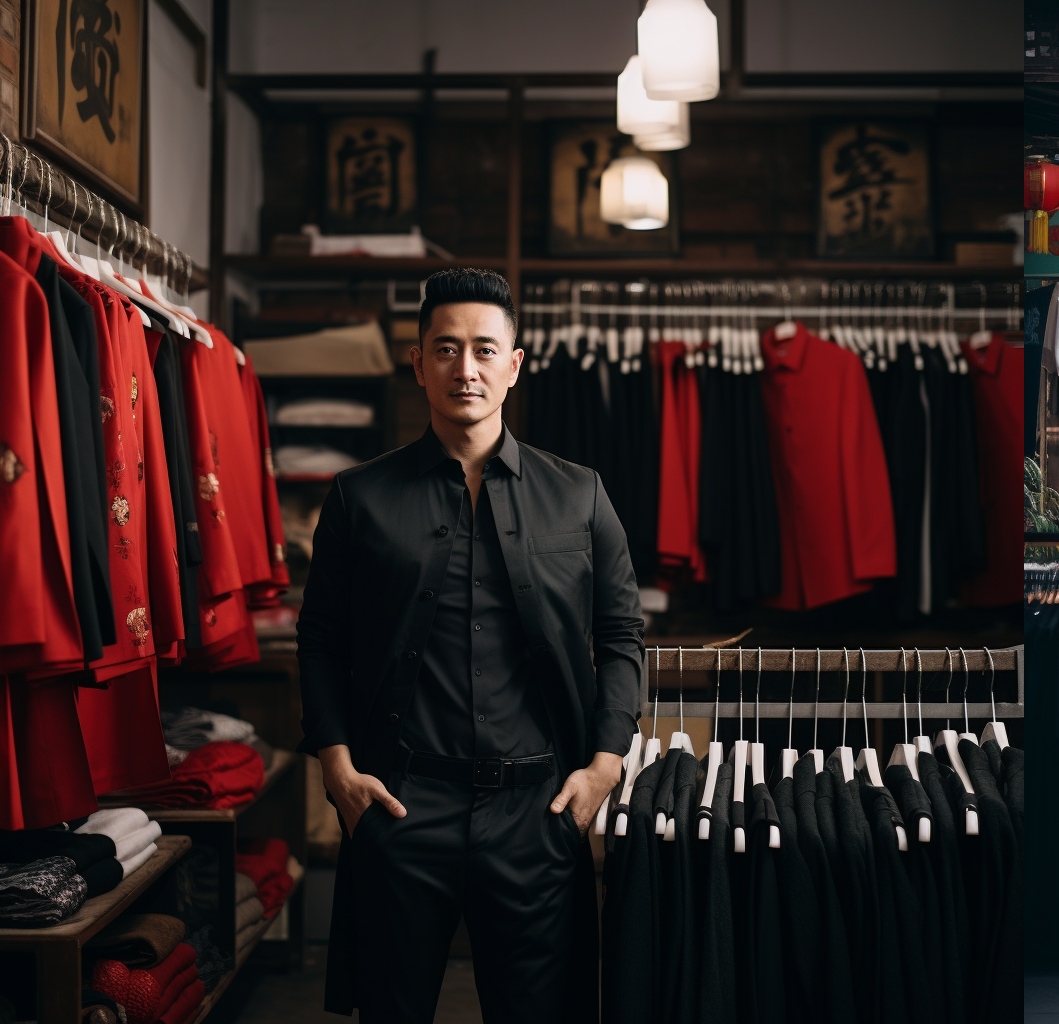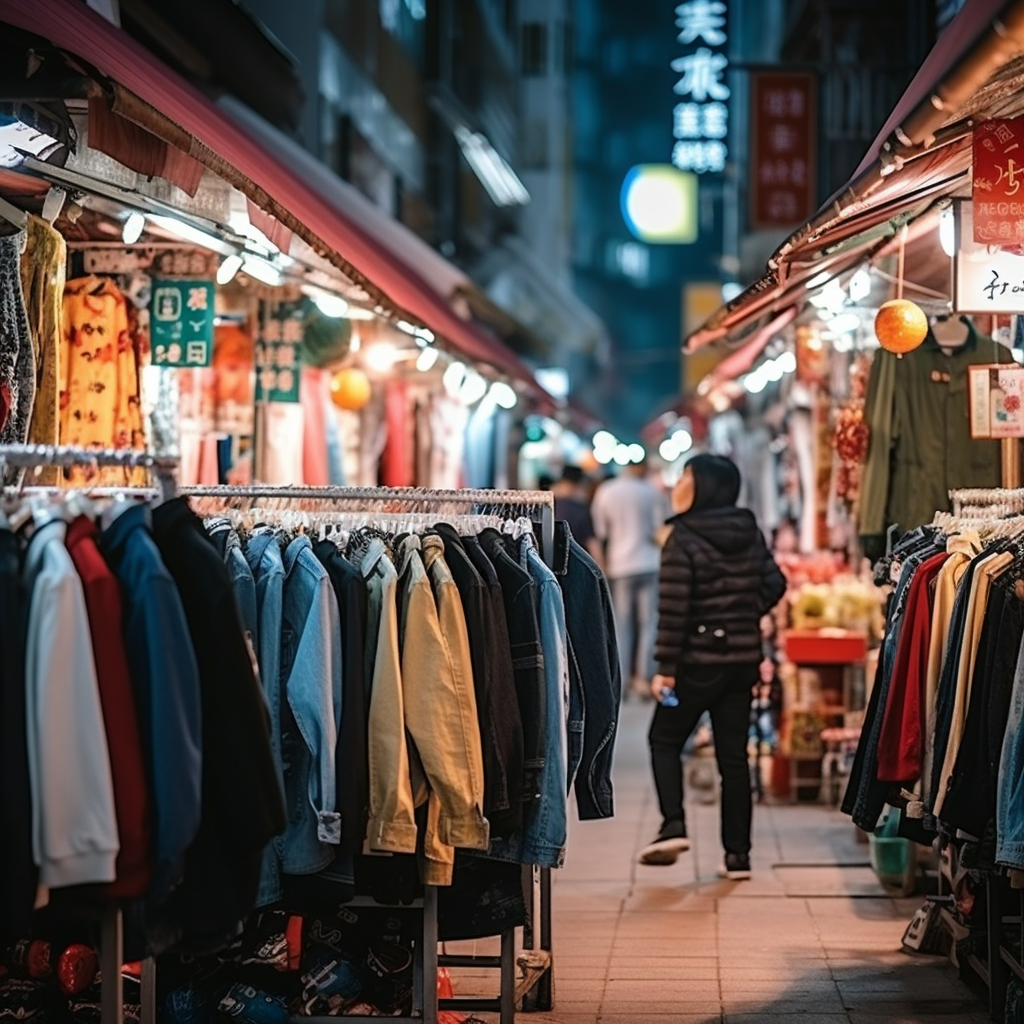Launching a Clothing Business in China: A Comprehensive Guide


Starting a clothing manufacturing business in China is a venture that promises significant potential, given the country's vast market and manufacturing prowess. China, often termed "the factory of the world," is known for its cost-effective labor, advanced manufacturing capabilities, and a rapidly growing consumer market with an increasing appetite for fashion.
However, stepping into this market isn't a walk in the park. It requires a deep understanding of the local market, legal aspects, manufacturing logistics, marketing strategies, financial planning, and potential challenges. In this article, we will explore these factors in detail, providing you with a comprehensive guide to help you build a successful clothing manufacturing business in China.
The Chinese clothing industry is a dynamic and fast-paced environment, driven by a combination of local and global trends. Companies that can navigate this environment effectively, understanding its intricacies and adapting to its rapid changes, are the ones that will find the greatest success.
This guide is not just about understanding the market or the manufacturing process, but about understanding the unique aspects of doing business in China. The following chapters will delve into these aspects, providing a roadmap that can lead to a profitable and sustainable clothing manufacturing business in this fascinating country.
Understanding the Chinese Market
2.1 Consumer Preferences
In the Chinese clothing manufacturing landscape, understanding consumer preferences is a cornerstone for any successful business. While the Chinese market is diverse and vast, there are observable trends that can inform your production strategy.
Chinese consumers are increasingly moving towards high-quality, fashion-forward items. They are becoming more conscious of the fabrics used, the craftsmanship, and the brand's sustainability practices. They value both local and international brands that offer unique designs and high-quality materials.
Younger demographics, particularly millennials and Gen Z, are driving the demand for trendy, casual, and streetwear clothing. Additionally, there is a growing demand for athleisure—casual, comfortable clothing suitable for both exercise and everyday wear.
2.2 Market Trends
The Chinese clothing market is dynamic and constantly evolving, influenced by both local and global fashion trends. Fast fashion, despite criticism, remains popular in China, with consumers looking for affordable, trendy items that they can frequently rotate.
But a shift is happening. With increased exposure to international brands and trends, Chinese consumers are becoming more fashion-conscious and are starting to gravitate towards higher-end, more sustainable fashion options.
The impact of technology is also significant. E-commerce is booming, and social media platforms like WeChat and Weibo, along with shopping platforms like Taobao and JD.com, are key drivers of fashion trends.
2.3 Competitive Landscape
The Chinese clothing market is highly competitive, with a mix of domestic and international players. Domestic manufacturers are known for their speed and adaptability, often producing clothing in line with the latest trends. International brands, on the other hand, are often associated with higher quality and prestige.
To succeed, new entrants must differentiate themselves in this crowded market. This could be through unique designs, high-quality materials, sustainable practices, or effective branding and marketing strategies.
Legal Aspects
3.1 Business Registration in China
Registering a business in China is essential for operating legally and comes with its own set of procedures. Foreign investors can establish a Wholly Foreign-Owned Enterprise (WFOE), a Joint Venture, or a Representative Office, depending on their requirements and investment strategy.
A WFOE allows for greater control over business operations and revenue, while a Joint Venture involves partnering with a Chinese company and sharing profits, losses, and management decisions. A Representative Office is more limited in scope, mainly serving as a liaison office without direct business activities.
It's important to engage with a legal advisor familiar with Chinese business laws to ensure smooth registration and compliance with local regulations.
3.2 Intellectual Property Rights
Protection of Intellectual Property Rights (IPR) is a crucial consideration for clothing manufacturers. China, in recent years, has made significant strides in strengthening its IPR laws and regulations. However, counterfeiting and piracy remain challenges.
To safeguard your designs, trademarks, and patents, it's necessary to register them with the appropriate Chinese authorities. It's also recommended to continuously monitor the market for any infringement and take swift legal action when necessary.
3.3 Labor Laws
Understanding China's labor laws is vital to ensure fair treatment of employees and avoid legal disputes. The country's labor laws cover areas like working hours, overtime pay, social insurance, and contract termination.
In particular, clothing should be aware of laws related to workplace safety and health due to the nature of the industry. Ensuring a safe working environment not only complies with local laws but also contributes to employee satisfaction and productivity.
Manufacturing Considerations
4.1 Sourcing Raw Materials
The choice of raw materials plays a significant role in the quality, cost, and sustainability of your clothing line. China is home to a vast network of textile suppliers, offering a wide variety of fabrics, from cotton and silk to synthetics like polyester and nylon.
However, the sourcing process isn't just about finding the cheapest option. It's about finding reliable suppliers who can consistently provide high-quality materials. It's also about considering the environmental impact of your choices. For instance, organic cotton or recycled polyester can be more sustainable choices that resonate with increasingly eco-conscious consumers.
4.2 Quality Assurance
In a market as competitive as China's, quality can be a key differentiator. Implementing a robust quality assurance (QA) system is crucial to ensuring that your products meet the desired standards and consumer expectations.
QA involves multiple stages, from inspecting raw materials and monitoring the production process to performing final checks on finished products. It may also involve obtaining certifications, such as ISO 9001 (Quality Management System) or OEKO-TEX (for textile safety), to further demonstrate your commitment to quality.
4.3 Production Capacity
Determining your production capacity is a balancing act between meeting demand and managing costs. Overestimating demand can lead to excess inventory and wasted resources, while underestimating can result in lost sales and dissatisfied customers.
In the early stages, it may be preferable to start with a lower capacity and scale up as demand grows. However, this approach requires a flexible manufacturing setup and a good understanding of your market.
Logistics and Supply Chain
5.1 Managing Suppliers
In a clothing manufacturing business, suppliers are key partners. They provide the raw materials you need to produce your clothing line. Building a good relationship with your suppliers is crucial for ensuring a steady supply of high-quality materials.
This involves regular communication, timely payments, and a mutual understanding of expectations. It's also important to have backup suppliers in case of any disruptions. And don't forget to regularly evaluate your suppliers' performance and make changes if necessary.
5.2 Local Distribution
Once your clothing line is produced, the next step is getting it to the customers. This involves choosing the right distribution channels. In China, e-commerce is a dominant channel, with platforms like Tmall, JD.com, and Pinduoduo offering access to millions of consumers.
However, offline channels shouldn't be overlooked. Department stores, shopping malls, and boutique shops can be effective for reaching certain customer segments. The choice of channels depends on your target market, brand positioning, and resources.
5.3 Exporting Goods
If you plan to sell your clothing line outside of China, you need to understand export regulations and procedures. This includes customs duties, export licenses, and shipping methods.
It's also important to consider the regulations and consumer preferences in your target markets. For example, certain materials or manufacturing processes might be banned in some countries, or there might be a preference for eco-friendly products.
In conclusion, effective logistics and supply chain management can enhance your efficiency, reduce costs, and improve customer satisfaction.
Marketing and Branding
6.1 Digital Marketing Strategies
In the digital age, having a robust online presence is indispensable. Chinese consumers are tech-savvy and rely heavily on digital platforms for shopping and product research. Platforms like WeChat, Weibo, and Douyin (Chinese TikTok) are popular channels for reaching and engaging consumers.
Content marketing is a powerful tool in the digital landscape. Sharing engaging, valuable content related to your brand and products can help attract and retain customers. This can be fashion tips, behind-the-scenes looks, or stories that convey your brand values.
Influencer marketing is another effective strategy. Collaborating with fashion influencers who align with your brand can help boost your visibility and credibility.
6.2 Branding for the Chinese Market
Branding is more than just a logo or tagline—it's about the identity and values that you want to convey to your customers. For Chinese consumers, both the aesthetic and the story behind the brand play a role in their purchasing decisions.
Consider incorporating elements of Chinese culture or trends into your branding. However, be careful to do so in a way that is respectful and authentic.
Building a strong brand also involves delivering on your promises. This means ensuring consistent quality, offering excellent customer service, and standing by your brand values.
In conclusion, effective marketing and branding are key to standing out in the competitive Chinese clothing market. They can help attract customers, build loyalty, and ultimately drive sales.
Financial Aspects
7.1 Initial Investment
Starting a clothing manufacturing business requires a substantial initial investment. This includes costs for business registration, factory setup, machinery, raw materials, and personnel, among others. The exact amount will depend on your business model, production capacity, and location.
Before starting, prepare a detailed business plan outlining all expected costs. This will not only give you a clearer picture of the financial requirements but also help attract potential investors or secure loans.
7.2 Operational Expenses
In addition to the start-up costs, there will be ongoing operational expenses. These include raw materials, labor, utilities, maintenance, marketing, shipping, and administrative expenses. Keep a close track of these costs to manage your cash flow efficiently and maintain profitability.
Remember to factor in unexpected costs, such as machinery breakdowns or fluctuations in raw material prices. Having a contingency fund can help manage these unforeseen expenses.
7.3 Profit Margins
Determining the right pricing for your clothing line is a balancing act. Set the price too high, and you risk losing customers; set it too low, and your profit margins may suffer.
Your pricing should cover all costs and leave room for profit, while also reflecting the perceived value of your product. Understanding your target market and competitive landscape can help determine a price point that maximizes profitability without deterring customers.
In conclusion, careful financial planning and management are key to the success of your clothing manufacturing business. They can help ensure sustainability, profitability, and growth in the long term.
Challenges and Risks
8.1 Market Saturation
As mentioned earlier, the Chinese clothing market is highly competitive, with numerous domestic and international players. Standing out in this crowded space can be challenging. It requires a unique value proposition, effective marketing, and consistent quality.
8.2 Changing Consumer Trends
Fashion trends can change rapidly, and what's popular today may not be tomorrow. Failing to keep up with these trends can lead to a decrease in sales and customer relevance. Regular market research and a flexible production strategy can help navigate this challenge.
8.3 Regulatory Challenges
China's regulatory environment can be complex and subject to change. New laws and regulations can impact various aspects of your business, from sourcing and production to marketing and sales. Staying informed about these changes and adapting accordingly is crucial.
8.4 Supply Chain Disruptions
Whether it's a global pandemic, trade disputes, or natural disasters, unforeseen events can disrupt your supply chain. This could lead to delays, increased costs, or even business closure. Developing a robust supply chain strategy, including diversifying suppliers and maintaining a buffer stock, can help mitigate these risks.
8.5 Intellectual Property Infringement
Despite improvements in China's IP laws, counterfeiting and piracy remain issues. Protecting your designs, trademarks, and patents is essential, but it can be resource-intensive and time-consuming. Having a strong legal strategy and being prepared to enforce your rights is key.
In conclusion, while the Chinese clothing market offers substantial opportunities, it also comes with challenges and risks. By understanding these, you can develop effective strategies to navigate them and increase your chances of success.





-500x500.jpg)
-500x500.jpg)
-500x500.jpg)
-500x500.jpg)
-500x500.jpg)